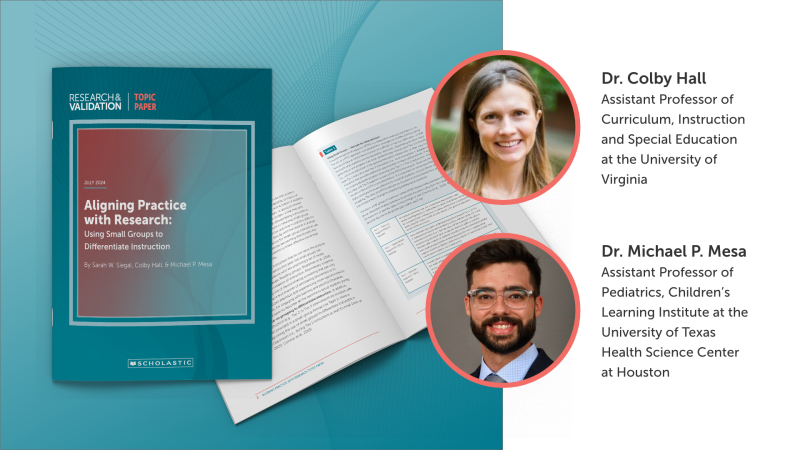Following the launch of Scholastic Education’s Research & Validation Topic Paper entitled “Aligning Practice with Research: Using Small Groups to Differentiate Instruction,” we have created a three-part series to share key insights from the paper and offer practical and valuable tips about how small-group instruction can have the greatest impact on classroom instruction.
Why is small group instruction so important?
There are few approaches that can facilitate the goal of differentiation better than small-group instruction. This is why nearly all educators employ it as a key component of their instructional strategies.
In a recent survey completed by elementary teachers across the United States, ninety percent of respondents indicated that they typically met with small groups of students three to five days a week.
Because each student is unique in terms of the knowledge, skills, experiences, and interests they bring to the classroom, small groups allow educators to be responsive to the needs of individual students while stretching and maximizing growth for all students.
During small-group differentiated instruction, a teacher typically works with a select number of students to address learning needs, behavioral characteristics, or topics of interest they have in common.
Additionally, dividing students into peer-led small groups can accelerate independence for those who are practicing a set of newly learned skills.
It’s important to note that small groups are not just for intervention. These effective instructional practices are effective for nearly all students.
The positive benefits of strategically using small-group instruction has been backed by several studies. We’ll take a deeper dive into the efficacy research in a future post, but here’s one particularly eye-opening finding:
A researcher observed instruction in thirty-four preschool classrooms and found that learning was ten times greater for preschoolers who were engaged in small-group instruction than for preschoolers who were engaged in whole-class instruction.
As an administrator, how can I help?
School administrators can play a pivotal role when they cultivate instructional best practices, prioritize effective training, and build a school or district culture focused on improving student achievement.
Administrators and school leaders play pivotal roles in creating an environment that supports the use of differentiated small-group instruction by adopting policies, curricula, and instructional resources that are compatible with effective small-group instruction.
Here are two key factors that will guide classroom success:
- Use assessment to guide instruction. Research shows that small-group instruction is more effective when data helps inform lesson content and the composition of student groups. These learnings can inform adjustments to instruction based on students’ instructional response or progress over time. Instruction guided by assessments has been shown to raise the quality of instruction and improve student outcomes. Because assessments can be expensive and time consuming, it is important to make assessments “count” by considering the domains of literacy that should be measured, the best ways to measure student knowledge/skill within each domain, and other factors that can help maximize the benefits of assessment. Following these steps will ensure that assessment has a net positive impact on student learning.
- Invest in professional development. Professional development, particularly training focused on both the why and how of differentiated small-group instruction, can support teachers’ understanding of ways to differentiate instruction and increase their ability to do so effectively. Evidence suggests teachers often feel a lack of confidence and skill when working with data, so school leaders should provide teachers with professional development and staff support to help with effective interpretation of assessment scores and other data sources to help make decisions about small-group instruction. Research supports the impact professional development has on outcomes. Students in classrooms with teachers who received extensive professional development outperformed their peers in the comparison classrooms on end-of-year reading measures, according to one study.
Small-group instruction has the potential to move the needle on student engagement and learning outcomes. Recognizing that time in a daily schedule is a finite resource for teachers makes it crucial for administrators and school leaders to schedule opportunities for teachers to regularly plan for and deliver small-group instruction.
Additionally, instructional resources that lend themselves for use in differentiated small-group instruction such as lessons or activities with various representations of content and multiple levels of instructional scaffolding can be an important ally in success.
The next post in this series will focus on practical considerations when designing small-group instruction. To read the full topic paper, click here.



